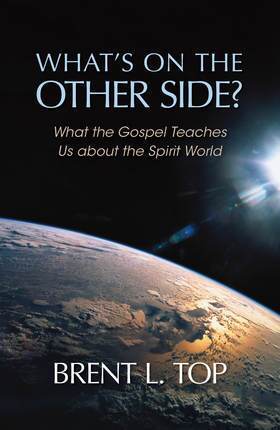There has been an undercurrent of interest among some Church members in the past decade or so about some highly publicized near-death experiences. What do the scriptures teach us about the purpose of near-death experiences?
The purpose of near-death experiences, according to scripture, is to testify of the saving and atoning power of Jesus Christ.
Nothing more and nothing less.
The scriptures share some beautiful stories of the dead or near-dead being raised to life. Perhaps we could call these near-death experiences. What do we learn from these near-death experiences in scripture stories? What do they tell us and how can this inform our faith?
According to the scriptures, near-death experiences are not told to bring fame or fortune, they are not told to gather an audience, they are not told to get someone published, and they are definitely not told to raise fear about the future through predictions of impending disaster.
Even Alma the Younger, who experienced one of the more well-known near-death experiences in the scriptures, only had words of testimony of Jesus’ saving power to share when he “returned” (see Alma 36).
His father, Alma the Elder “commanded them that they should preach nothing save it were repentance and faith on the Lord, who had redeemed his people” (Mosiah 18:20). Alma and his father never told near-death experience stories to arouse the masses. Nor did he connect near-death experiences with fear-mongering or to pervasive worries about future suffering or destruction. Instead, he and other prophets have preached the healing joy of salvation found in Jesus Christ for those who repent and have faith.
Why does the Gospel of John share the story of Jesus Christ raising Lazarus from the dead? Jesus, speaking to His disciples, said, “Lazarus is dead. And I am glad for your sakes that I was not there, to the intent ye may believe" (see John 11:14-15). The chapter later continues with Jesus speaking to Lazarus' sister Martha: "I am the resurrection, and the life: he that believeth in me, though he were dead, yet shall he live: And whosoever liveth and believeth in me shall never die. Believest thou this?’ [Martha] saith unto him, ‘Yea, Lord: I believe that thou art the Christ, the Son of God, which should come into the world” (John 11: 25-27).
This scripture story is not told to inspire fear of or to reveal the future, but to find incommensurable joy in the reality of the power of Jesus to raise us from spiritual and physical death. Instead of fearing death, we are to rejoice in the promise of life.
In our day, if stories of near death experiences contain anything more or less than the saving, atoning power of Jesus Christ they should be ignored as the Church has concluded. And combining near-death experiences with warnings of future destruction is deeply problematic, simply arousing fear and misplaced concern where there is no need. We should preach life, light, hope, service, repentance and kindness—not fear.
Near-death experiences, if they happen at all, are not meant for public consumption or sharing as we have so often been reminded through Joseph Smith’s prophetic instruction:
“Let us be faithful and silent and if God gives you a manifestation, keep it to yourselves” (see History of the Church 2:309).
And, “I will inform you that it is contrary to the economy of God for any member of the church, or any one, to receive instructions for those in authority, higher than themselves. But if any person have a vision or a visitation from a heavenly messenger, it must be for his (or her) own benefit and instruction” (HC 1:338, emphasis added).
And further, “All men know that they must die. And it is important that we should understand the reasons and causes of our exposure to the vicissitudes of life and of death, and the designs and purposes of God in our coming into the world, our suffering here, and our departure hence….Reading the experience of others, or the revelation given to them, can never give us a comprehensive view of our condition and true relation to God. Knowledge of these things can only be obtained by experience through the ordinances of God set forth for that purpose” (HC 6:50).
The word, will, and mind of God come through the scriptures and his appointed servants, not near-death experiences. We make the words of God come alive again as we read them and apply them. His words tell us to have faith and repent, not to have fear. Our focus should be on Jesus Christ and the joy of salvation through His Atonement. We should not let our hearts become fearful by vain imaginations of the future. By so doing, we are secure in the embrace of God’s love, our hearts find peace, we find peace with our fellow brothers and sisters, and the world also finds peace.
Lead photo from Getty Images
The Prophet Joseph Smith observed that death and the spirit world are subjects "we ought to study more than any other. . . . If we have claim on our Heavenly Father for anything, it is for knowledge on this important subject."
Brent Top, a professor of Church History and Doctrine at BYU, highlights the wealth of information the scriptures and latter-day prophets and apostles have provided to us about death and the spirit world—its location and conditions, the nature of departed spirits, and the work performed for and by those there. Removing much of the mystery and fear associated with dying,What's On the Other Side: What the Gospel Teaches Us About the Spirit World demonstrates that knowing what life will be like after death can help inspire us to live better lives here and now. Available at Deseret Book stores and on deseretbook.com.



